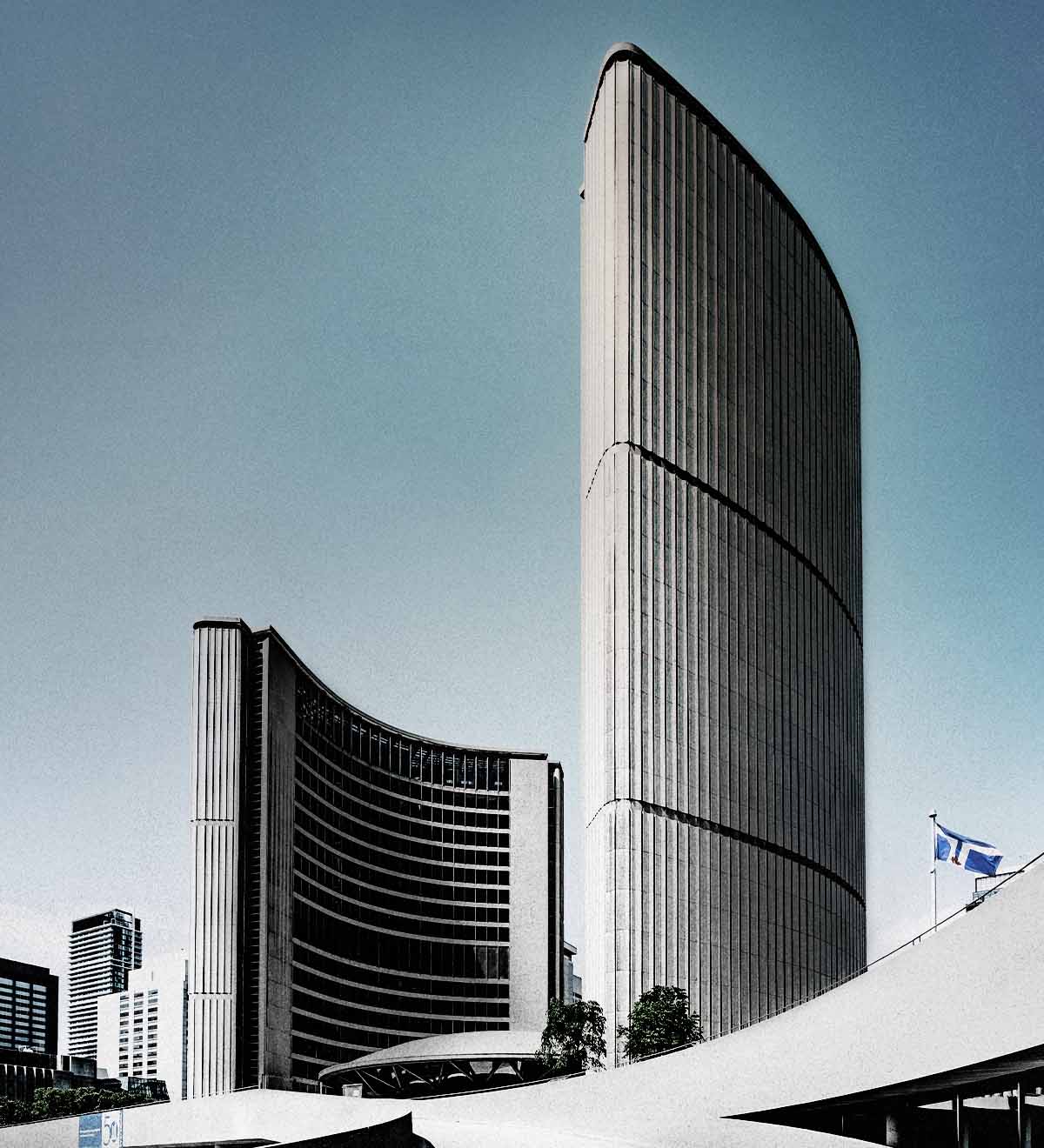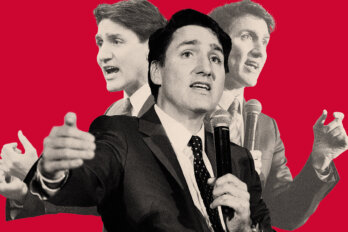In 1998, the Ontario government, led by the Progressive Conservative premier Mike Harris, amalgamated the then city of Toronto, its neighbours of Scarborough, North York, East York, York, and Etobicoke, and the regional government (Metropolitan Toronto) against the will of the elected governments and the residents. In a referendum, voters in all of the municipalities voted overwhelmingly against amalgamation, but it proceeded nonetheless. The courts upheld the legislation despite legal challenges, essentially ruling that the province, because it has the legal ability to legislate over municipalities, had the authority to impose an amalgamation against the will of the residents and the people elected by them.
Amalgamation was a double-edged sword: on the one hand, its very size risked the existing tradition of robust engagement with residents; on the other, it empowered the city government and the office of mayor with a tremendous platform—speaking for about 2.3 million residents—a population not only bigger than that of most Canadian provinces but only a little smaller than the then populations of Alberta and British Columbia.
Since the amalgamation, cities around the world have risen in influence and power. Starting in about 2007, due in part to the explosive growth of megacities in China and a migration to cities in many regions across the globe, more people now live in urban areas than rural. For the first time in human history, the world has become predominantly urban. According to the World Bank, cities are where the bulk of economic activity happens: they generate over 80 percent of global GDP.
Over the past fifteen years or so, city governments have asserted their influence internationally over a range of issues: on climate change, health, migration, and diplomacy, to name just a few. They can do this, and be remarkably effective, not just because they have a strong voice but because they, as an order of government, largely have a powerful combination of delivering real services and a practice of strong engagement with their residents. They are globally powerful precisely because they are effective and democratic local governments.
In Toronto’s case, though, despite the size of the city, voters are treated as if they do not have the ability or the right to make democratic decisions about their own governance. Not only is this alarmingly anti-democratic but it goes against trends around the world, where a new era of strong cities is leading change.
Toronto is sadly moving in the opposite direction. What would it take to bring the city back?
Over the past five years, successive provincial legislation, enabled by a largely compliant mayor, has diminished the stature of Canada’s largest city and the ability of its residents to democratically participate in its governance—all without their consent or participation in any way. This, to me, was an assault on civic democracy. When he was still mayor, John Tory admitted meeting privately with the premier to raise these changes, which meant reducing public representation, assuming veto powers, and asking for and receiving minority rule—all of which shrinks the influence of citizens on the decisions affecting them and their communities.
And by effectively surrendering to the provincial government the ability to make strategic decisions—like where to locate new rapid transit lines—he has dramatically diminished the city’s role and influence. In February, Tory resigned in disgrace over his affair with a staffer. His legacy is the voluntary reduction of the power and influence of the City of Toronto—and a corresponding diminution of the ability of its residents to meaningfully participate in the life of the city. The forthcoming by-election for mayor of Toronto will determine whether the office is held by someone who understands and acts on these key principles—or not.
In 2008, during my second term as mayor, I was elected by my international peers to be the chair of C40 Cities, a coalition of the mayors of major cities working together to help the world avoid climate breakdown. In 2016, the group committed to doing its fair share to keep the global average temperature rise to 1.5 degrees at a time when national governments were congratulating themselves on the Paris Agreement, which agreed to a weaker target of 2 degrees. C40 isn’t alone; inspired by the writing of Benjamin R. Barber (If Mayors Ruled the World), the Global Parliament of Mayors held its first meeting in 2016, and the Mayors Migration Council launched in 2018. Writing in Foreign Policy in 2021, Nina Hachigian, then deputy mayor of international relations for Los Angeles, said the following about the growing role of cities on the international stage:
It may come as a surprise to some, but state and local governments interact with the world outside U.S. borders in many more ways than in the past. Local leaders are the actual boots on the ground when transnational threats hit U.S. shores, setting pandemic rules, distributing vaccines, coping with extreme weather, and caring for migrants. Local governments have become key national security actors.
Their direct role in foreign policy has also been growing. For example, U.S. local leaders regularly nurture relationships with foreign governments. In any given week in Los Angeles, where I am the deputy mayor for international affairs, Mayor Eric Garcetti could be speaking with his counterparts in Tokyo, Jakarta, or Mexico City, the ambassadors of India or France, or the secretary-general of the United Nations. Before the pandemic, Los Angeles hosted heads of state and government ministers on a regular basis. Of course, these relationships do not define the contours of national ones, but the sum total of local ties—involving government, civil society, business, and countless individual people—is a critical stabilizer. In a democracy, especially one with a federal, decentralized system, these ties create the political space for closer relations or, in some cases, frostier ones.
While she was writing from an American perspective, the age of cities is a global phenomenon. Although this trend has been empowered by increased urbanization, there is also a subtler reason for the growth of cities on the world stage: the basic form and structure of this order of government. While responsibilities vary globally, cities generally must deliver real services—not just policies—and have a strong connection to their residents. Healthy and vibrant local democracies include a variety of required and voluntary ways to engage with residents, and many resident-driven organizations work with City Hall. These interactions create a sense of connection between people and their local government and, at their best, ensure that the services the government delivers meet the needs of its residents as expressed by them.
In Toronto’s case, the services provided by the city are broad and touch virtually every aspect of daily life, except for hospitals and education. The city runs social services for people—like child care, recreation, and youth programmes. It provides income support and housing—and in fact is Canada’s biggest landlord. And much, much more: public health, public safety through fire, police and paramedics, public transit, libraries, parks, trees, environment, clean water, electricity, small business supports, roads, and transportation. And, of course, planning, which decides where, what type of, and often how new buildings can be built.
Traditionally, there has been a strong sense of civic engagement in Toronto—and a willingness in council to listen to residents through robust public-engagement processes and lively debates. It was this engagement that stopped the Spadina Expressway coming into the downtown; that convinced the Toronto Transit Commission to retain its streetcar lines; that protected Rouge Park, now North America’s largest urban park; and brought back the Don River, declared dead in 1969—all thanks to a strong, engaged citizenry.
The heft of the new megacity also enabled Toronto, in partnership with other Canadian cities, to take a leadership role in building the “New Deal for Cities” with the Paul Martin government in 2005—a deal that resulted in billions of dollars in funding for transit and housing in Toronto, and if his government had not fallen, it likely would have resulted in a tripartite agreement between Toronto, Queen’s Park, and Ottawa about a variety of issues that would have empowered the Toronto government. Together with the City of Toronto Act in 2006, there was a recognition of the significance of the city government and of the rights of its residents to not only vote but to determine important issues themselves through the representatives they democratically elected—issues like the number of city wards, their size, and, therefore, the number of councillors.
As it was, the federal funding (accompanied by significant agreements reached with the province and new revenue sources permitted by the City of Toronto Act) helped transform Toronto’s ability to provide services. For example, transit service increased dramatically and, by 2010, ridership was setting new single-day records. The TTC also began construction on an ambitious expansion plan crafted by the city, based on its own assessments of where transit is needed most.
Is it possible to demonstrate academically the direct line between democratic accountability and the engagement of residents? Possibly. But the contrast with today is clear.
In many ways, Toronto appears broken because basic services have been starved for years. In 2018, the reduction in the number of council wards in Ontario from forty-five to twenty-five gave the city’s nearly 3 million residents less representation. The new “strong mayor” powers from the province—which give the mayor the authority to veto certain bylaws and to table the budget, instead of the council doing so—also came into effect. The failure to grow the tax base has resulted in the service cuts that have been the object of so much public concern. Together with the impacts of COVID-19—meaning, a decrease in TTC ridership (and, therefore, revenue)—have resulted in a roughly $1 billion deficit in Toronto. It’s all resulted in disengaged citizens and made the city weaker.
The course can be changed. Broadly speaking, it will require both council and the next mayor to show political fortitude and a recognition that their role, particularly for the mayor, is to fight for the best interests of Toronto’s residents—not through backroom deals but very much in public view.
Residents have a right to a real say over the policies, services, and actions that affect them and their communities. Initiatives like Listening to Toronto (a series of pre-budget community-engagement events that I instituted in my time as mayor), participatory budgeting (in which residents help determine how to allocate public funds), and providing responsive city services through measures like 311 all are a place to start, as was the 2016 broad public consultation about ward boundaries, in which people demanded more representation, not less.
The mayor and council need to develop plans to address the needs of the residents of Toronto. From transit and active transportation to planning, housing, homelessness, and much more, the needs of Torontonians are best met when the city sets out the plan and forces the province and Ottawa to respond rather than when the city passively accepts their mandates.
And by bringing together coalitions of mayors and the cities they lead provincially and nationally, Toronto, in the past, has helped change federal and provincial policies and funding significantly, delivering billions of dollars in investments to the people of this city. A coalition of leading cities is far more powerful than the voice of one mayor or council, particularly when that coalition is focused on a small number of common goals—which, in my experience, is no more than three. This was how the New Deal for Cities was crafted: in partnership with Ottawa and with cities and towns, large and small, but driven by the largest Canadian cities.
Today, a government unable to afford the services its residents expect has time only to focus inward, not to rebuild the connections with local residents lost through legislation for which no one had a mandate, certainly not from Torontonians. It is a loss at home. A loss nationally. And a loss for the world.





